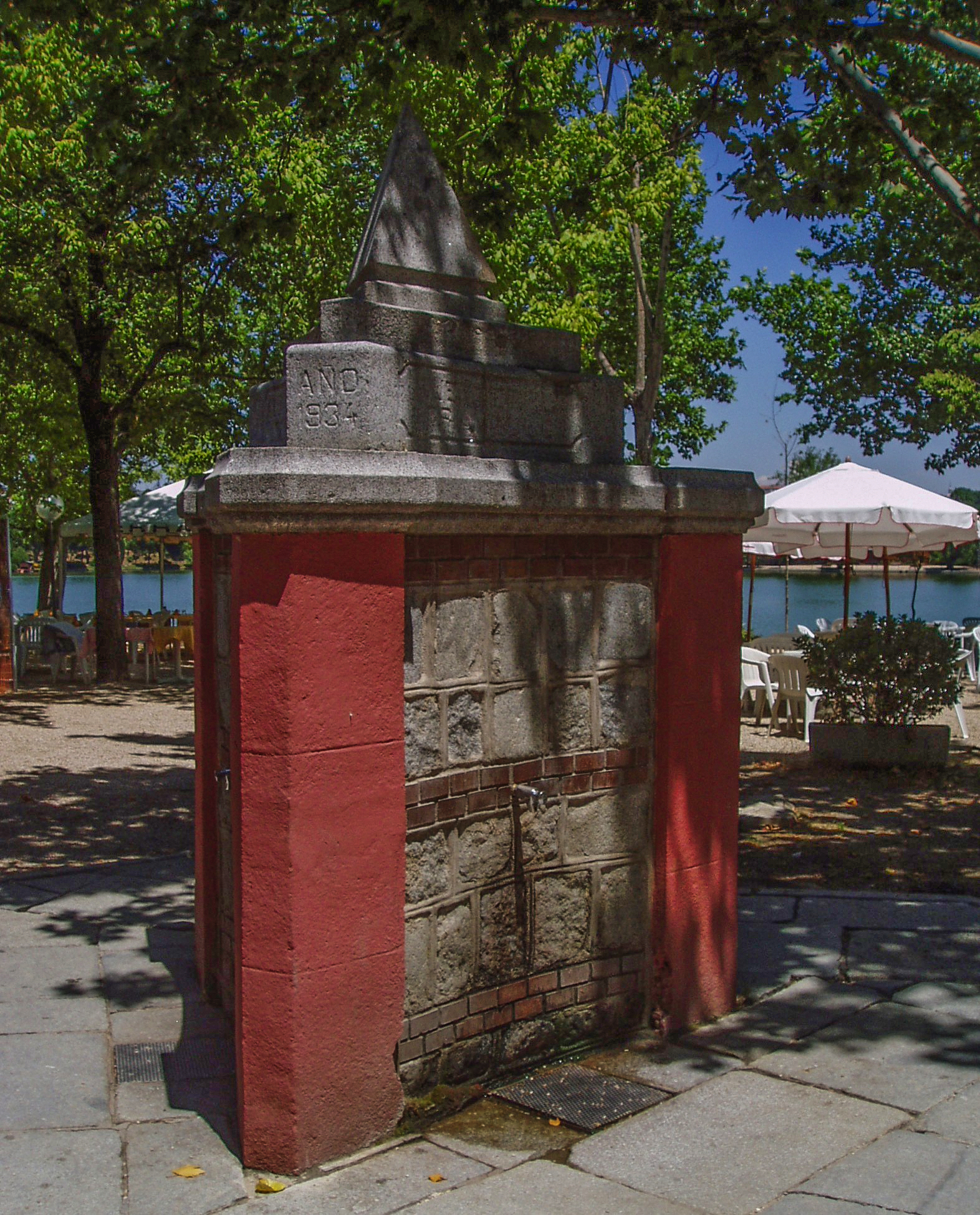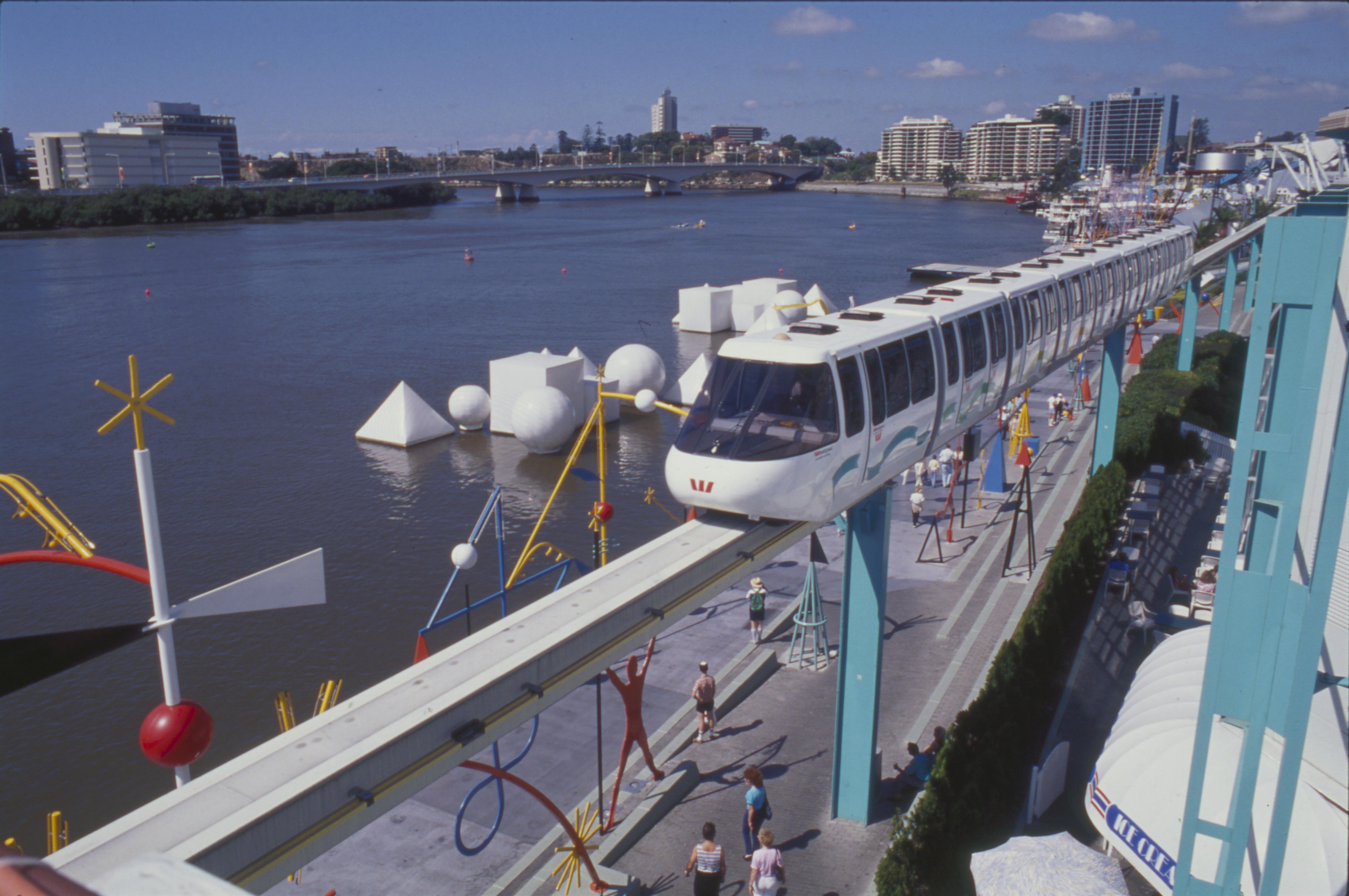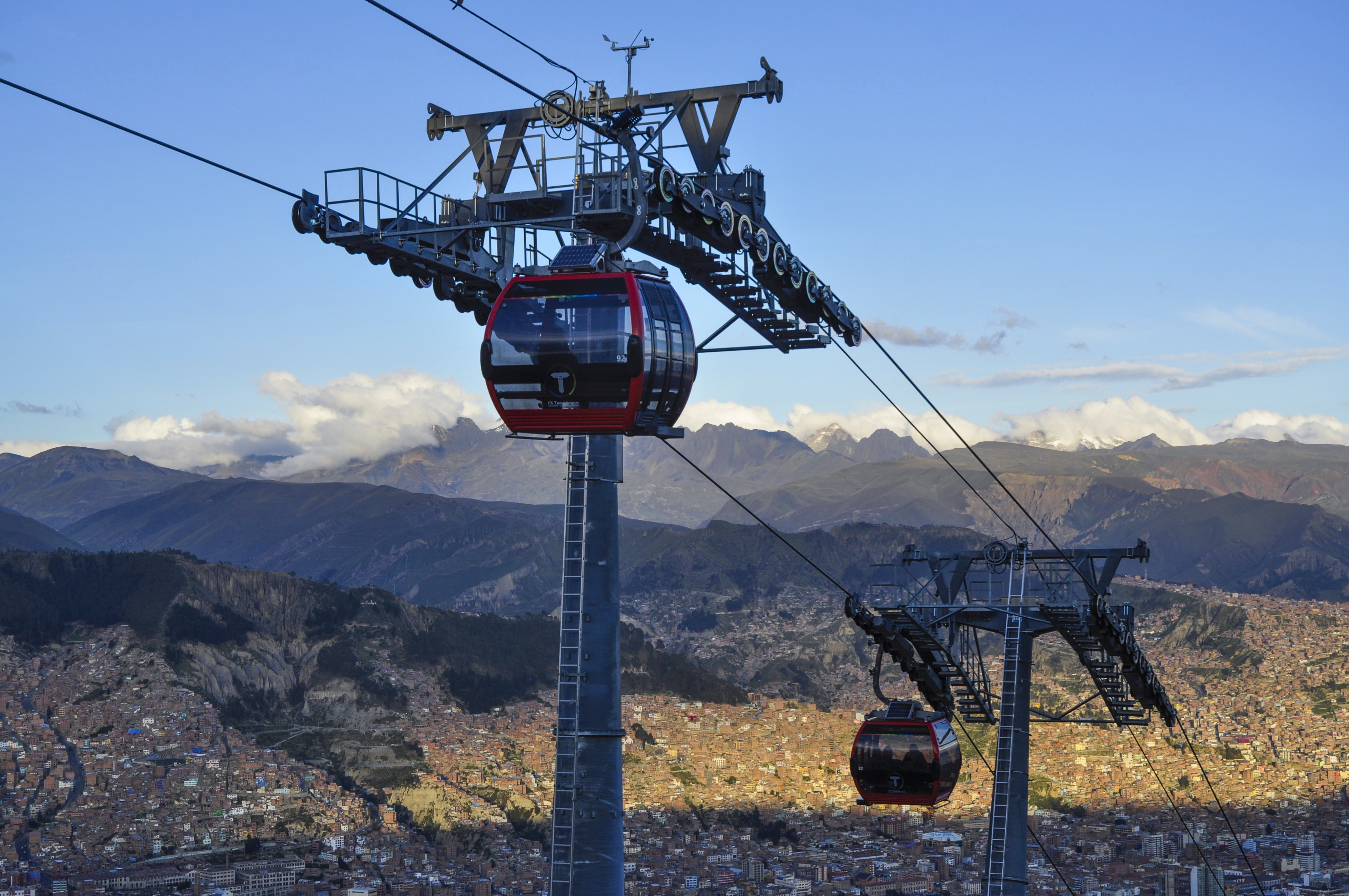|
Teleférico De Madrid
The ''Teleférico de Madrid'', or Madrid Cable Car, is a gondola lift in the Spanish capital city of Madrid. It is long and links the Parque del Oeste with the Casa de Campo. The line was built by Von Roll Von Roll Holding AG is a Swiss industrial group that operates worldwide. It was founded in 1803. As one of Switzerland’s longest-established industrial companies, Von Roll focuses today on products and systems for electrical applications such ... and opened in 1969. It uses 72 six-seater cabins, which take 11 minutes to travel the full length of the line. References External links * Teleférico de Madrid web site Gondola lifts in Spain Transport in Madrid 1969 establishments in Spain {{Spain-transport-stub ... [...More Info...] [...Related Items...] OR: [Wikipedia] [Google] [Baidu] |
Gondola Lift
A gondola lift is a means of cable transport and type of aerial lift which is supported and propelled by cables from above. It consists of a loop of steel wire rope that is strung between two stations, sometimes over intermediate supporting towers. The cable is driven by a bullwheel in a terminal, which is typically connected to an engine or electric motor. It is often considered a ''continuous system'' since it features a haul rope which continuously moves and circulates around two terminal stations. In contrast, an aerial tramway operates solely with fixed grips and simply shuttles back and forth between two end terminals. The capacity, cost, and functionality of a gondola lift will differ dramatically depending on the combination of cables used for support and haulage and the type of grip (detachable or fixed). Because of the proliferation of such systems in the Alps, the it, Cabinovia and french: Télécabine are also used in English-language texts. The systems m ... [...More Info...] [...Related Items...] OR: [Wikipedia] [Google] [Baidu] |
Madrid
Madrid ( , ) is the capital and most populous city of Spain. The city has almost 3.4 million inhabitants and a metropolitan area population of approximately 6.7 million. It is the second-largest city in the European Union (EU), and its monocentric metropolitan area is the third-largest in the EU.United Nations Department of Economic and Social AffairWorld Urbanization Prospects (2007 revision), (United Nations, 2008), Table A.12. Data for 2007. The municipality covers geographical area. Madrid lies on the River Manzanares in the central part of the Iberian Peninsula. Capital city of both Spain (almost without interruption since 1561) and the surrounding autonomous community of Madrid (since 1983), it is also the political, economic and cultural centre of the country. The city is situated on an elevated plain about from the closest seaside location. The climate of Madrid features hot summers and cool winters. The Madrid urban agglomeration has the second-large ... [...More Info...] [...Related Items...] OR: [Wikipedia] [Google] [Baidu] |
Spain
, image_flag = Bandera de España.svg , image_coat = Escudo de España (mazonado).svg , national_motto = ''Plus ultra'' (Latin)(English: "Further Beyond") , national_anthem = (English: "Royal March") , image_map = , map_caption = , image_map2 = , capital = Madrid , coordinates = , largest_city = Madrid , languages_type = Official language , languages = Spanish language, Spanish , ethnic_groups = , ethnic_groups_year = , ethnic_groups_ref = , religion = , religion_ref = , religion_year = 2020 , demonym = , government_type = Unitary state, Unitary Parliamentary system, parliamentary constitutional monarchy , leader_title1 = Monarchy of Spain, Monarch , leader_name1 = Felipe VI , leader_title2 = Prime Minister of Spain ... [...More Info...] [...Related Items...] OR: [Wikipedia] [Google] [Baidu] |
Parque Del Oeste
The Parque del Oeste (in English: ''Western Park'') is a park of the city of Madrid (Spain) situated between the Autovía A-6, the Ciudad Universitaria de Madrid and the district of Moncloa. Before the 20th century, the land that the park currently occupies was the main landfill of the city. The park is the initiative of Alberto Aguilera, the mayor of the city at the beginning of the 20th century, who in 1906 requested the layout of a place for walking and relaxation by landscape artist Celedonio Rodrígáñez. It has beautiful sites such as the rose garden, where a rose competition is held every year. One of the monuments in the park is the Temple of Debod, an Ancient Egyptian temple. The Egyptian state donated the temple of Debod to Spain in 1968 as a sign of gratitude for the help provided by Spain in saving the Abu Simbel temples. The Parque del Oeste is linked to the Casa de Campo by the Teleférico de Madrid, a gondola lift. History Work began in 1893 and the f ... [...More Info...] [...Related Items...] OR: [Wikipedia] [Google] [Baidu] |
Casa De Campo
The Casa de Campo (, for Spanish: ''Country House'') is the largest public park in Madrid. It is situated west of central Madrid, Spain. It gets its name 'Country House' because it was once a royal hunting estate, located just west of the Royal Palace of Madrid. It was created in the early 16th century for use by the royal family and nobility, and was opened to the public in 1931 when it became a public park. Today, it is a popular green space and weekend destination for Madrid residents. Its area is , about five times the size of New York City's Central Park or twice the size of Paris' Bois de Boulogne. The Casa de Campo is linked to the Parque del Oeste by the Teleférico de Madrid, a gondola lift. The complex was declared in 2010 an '' Asset of Cultural Interest'' by the Community of Madrid. For its part, the regulations of the General Urban Planning Plan of the Madrid City Council, of 1997, classify it as a historic park. Overview An amusement park, the Parque de Atrac ... [...More Info...] [...Related Items...] OR: [Wikipedia] [Google] [Baidu] |
Von Roll
Von Roll Holding AG is a Swiss industrial group that operates worldwide. It was founded in 1803. As one of Switzerland’s longest-established industrial companies, Von Roll focuses today on products and systems for electrical applications such as power generation, transmission, and storage as well as e-mobility and industrial applications. History Von Roll has its roots in the ''Eisenwerke der Handelsgesellschaft der Gebrüder Dürholz & Co.'' (Ironworks of the commercial firm of the Brothers Durholz & Co.) which was established in 1803. This firm was then taken over in 1810 by Von Roll & Cie, newly formed by Ludwig Freiherr von Roll (1771–1839) and Jakob von Glutz. In May 1823, Ludwig von Roll founded the ''Gesellschaft der Ludwig von Roll'schen Eisenwerke'' which benefited from industrialization and railroad construction that demanded a lot of iron.Von Roll Holding AG This History of Von Roll/ref> Von Roll participated in the construction of the Wetterhorn Elevator in 19 ... [...More Info...] [...Related Items...] OR: [Wikipedia] [Google] [Baidu] |
Gondola Lift
A gondola lift is a means of cable transport and type of aerial lift which is supported and propelled by cables from above. It consists of a loop of steel wire rope that is strung between two stations, sometimes over intermediate supporting towers. The cable is driven by a bullwheel in a terminal, which is typically connected to an engine or electric motor. It is often considered a ''continuous system'' since it features a haul rope which continuously moves and circulates around two terminal stations. In contrast, an aerial tramway operates solely with fixed grips and simply shuttles back and forth between two end terminals. The capacity, cost, and functionality of a gondola lift will differ dramatically depending on the combination of cables used for support and haulage and the type of grip (detachable or fixed). Because of the proliferation of such systems in the Alps, the it, Cabinovia and french: Télécabine are also used in English-language texts. The systems m ... [...More Info...] [...Related Items...] OR: [Wikipedia] [Google] [Baidu] |
Gondola Lifts In Spain
The gondola (, ; vec, góndoła ) is a traditional, Flat-bottomed boat, flat-bottomed Venice, Venetian watercraft rowing, rowing boat, well suited to the conditions of the Venetian lagoon. It is typically propelled by a gondolier, who uses a rowing oar, which is not fastened to the Hull (watercraft), hull, in a Stern sculling, sculling manner and also acts as the rudder. The uniqueness of the gondola includes its being asymmetrical along the length making the single-oar propulsion more efficient. For centuries, the gondola was a major means of transportation and the most common watercraft within Venice. In modern times, the boats still do have a role in public transport in the city, serving as ''traghetti'' (small Ferry, ferries) over the Grand Canal (Venice), Grand Canal operated by two oarsmen. Various types of gondola boats are also used in special regattas (rowing races) held amongst gondoliers. Their primary role today, however, is to carry tourists on rides at fixed rates ... [...More Info...] [...Related Items...] OR: [Wikipedia] [Google] [Baidu] |
Transport In Madrid
Madrid is served by highly developed transport infrastructure. Road, rail and air links are vital to maintain the economic position of Madrid as a leading centre of employment, enterprise, trade and tourism, providing effective connections with not only other parts of the region, but also the rest of Spain and Europe as a whole. Three quarters of a million people commute into the city to work,''Estructura Economica de le Ciudad de Madrid'' ''Ayuntamiento de Madrid'' (Madrid City Council), August 2013 and these and other local travellers have available a high-capacity metropolitan road network and a well-used |






